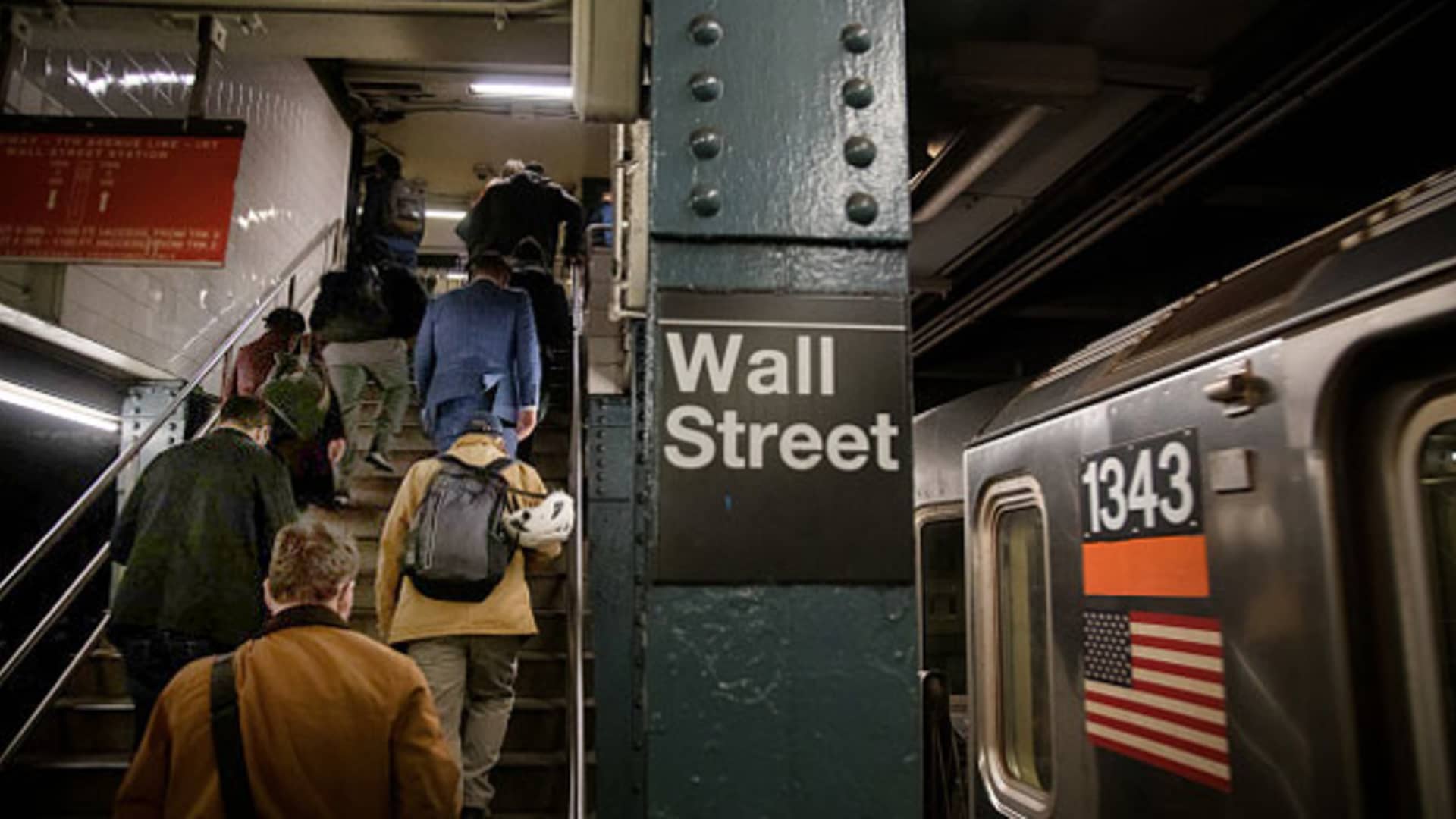Products You May Like
The yield on the benchmark 10-year Treasury topped 5% again Monday, a key level that could impact mortgage rates, student debt, auto loans and more.
Last week, the 10-year yield crossed the 5% threshold for the first time in 16 years after Federal Reserve Chair Jerome Powell said ”inflation is still too high,” raising expectations that another rate hike may not be completely off the table this year.
“That has real impacts on the economy, ultimately affecting every individual in the U.S.,” said Mark Hamrick, Bankrate.com’s senior economic analyst.
Stock futures fell on Monday as yields rose and investors assessed the prospect of higher-for-longer interest rates from the Fed.
The yield on the 10-year note is a barometer for mortgage rates and other types of loans.
“When the 10-year yield goes up, it will have a knock-on effect for almost everything,” according to Columbia Business School economics professor Brett House.
Even though many of these consumer loans are fixed, anyone taking out a new loan will likely pay more in interest, he said.
Why Treasury yields have jumped
A bond’s yield is the total annual return investors get from bond payments. There are many factors driving the recent spike in Treasury yields, economists said.
For one, yields tend to rise and fall according to the Federal Reserve’s interest rate policy and investors’ inflation expectations.
In this case, the central bank has hiked its benchmark rate aggressively since early 2022 to tame historically high inflation, pushing up bond yields. Inflation has fallen significantly since then. However, Fed officials and recent strong U.S. economic data suggest interest rates will likely have to stay higher for a longer time than many expected to finish the job. Higher oil prices have also fed into inflation fears.
But interest rates are just part of the story.
Most of the recent jump in Treasury yields is due to a so-called “term premium,” said Andrew Hunter, deputy chief U.S. economist at Capital Economics.
Basically, investors are demanding a higher return to lend their money to the U.S. government — in this case, for 10 years. One reason: Investors seem skittish about rising U.S. government debt, Hunter said. Generally, investors demand a higher return if they perceive a greater risk of the government’s inability to pay back debt in the future.
The rapid rise in Treasury yields may “accelerate an already weakening economic picture that is masked by higher rates,” said Canaccord Genuity Group chief market strategist Tony Dwyer in a Monday note.
Mortgage rates will stay high
Most Americans’ largest liability is their home mortgage. Currently, the average 30-year fixed rate is up to 8%, according to Freddie Mac.
“For those who are planning to buy a home, this is really bad news,” said Eugenio Aleman, chief economist at Raymond James.
“Mortgage rates will probably continue to go up and that will push affordability farther away.”
Student loans could get pricier
There is also a correlation between Treasury yields and student loans.
A college education is the second-largest expense an individual is likely to face in a lifetime, right after purchasing a home. To cover that cost, more than half of families borrow.
Undergraduate students who take out new direct federal student loans for the 2023-24 academic year are now paying 5.50% — up from 4.99% in the 2022-23 academic year and 3.73% in 2021-22.
The government sets the annual rates on those loans once a year, based on the 10-year Treasury.
If the 10-year yield stays above 5%, federal student loan interest rates could increase again when they reset in the spring, costing student borrowers even more in interest.
Car loans are getting more expensive
There is also a loose correlation between Treasury yields and auto loans. The average rate on a five-year new car loan is currently 7.62%, the highest in 16 years, according to Bankrate. Now, more consumers face monthly payments that they likely cannot afford.
“There are only so many people who can carve out an $800 to $1,000 car payment,” Bankrate’s Hamrick said.
More from Personal Finance:
The inflation breakdown for September 2023 — in one chart
Social Security cost-of-living adjustment will be 3.2% in 2024
Lawmakers take aim at credit card debt, interest rates, fees
While other types of borrowing, including credit cards, small business loans and home equity lines of credit, are predominantly pegged to the federal funds rate and rise or fall in step with Fed rate moves, those rates could head higher, too, according Aleman.
“Everything from business loans to consumer loans is going to be affected,” he said.
Savers can benefit
One group that does stand to benefit from higher yields is savers.
“For many years, we’ve been bemoaning the plight of savers,” Hamrick said. But because yields tend to be correlated to changes in the target federal funds rate, deposit rates are finally higher.
High-yield savings accounts, certificates of deposits and money market accounts are now paying over 5%, according to Bankrate, which is the most savers have been able to earn in more than 15 years.
“This is the rare time in recent history when cash looks pretty good,” Hamrick said.
Subscribe to CNBC on YouTube.
Don’t miss these CNBC PRO stories:
- This bank just hiked its 1-year CD rate to a fresh high
- A low-cost way to protect against an S&P 500 drawdown as risks escalate
- How to invest $1 million for the next decade, according to private bankers and wealth advisors
- This highly profitable industry is booming as the population ages
- Bank of America sees risks for employers as insurance coverage of weight loss drugs grows
